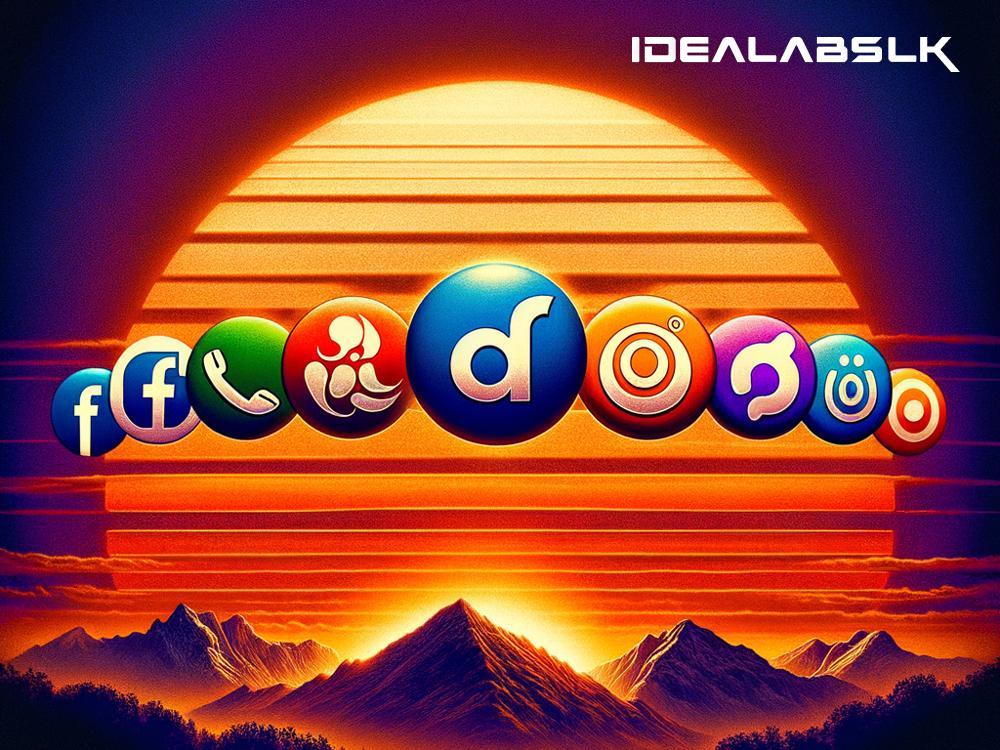Title: The Rise and Fall of Early Social Media Platforms: A Digital Ebb and Flow
In the ever-changing landscape of the internet, early social media platforms served as digital pioneers, shaping the way we communicate, share, and perceive our online environments. These platforms, some remembered with nostalgia, others forgotten, constitute tales of innovation, meteoric rises, and, oftentimes, abrupt declines. Today, we take a stroll down memory lane to understand the journey of these early digital communities.
The Dawn of Social Connections
Before Facebook, Instagram, and Twitter became household names, there were platforms that paved the way for social networking. One of the first to make waves was Friendster. Launched in 2002, it was designed to connect friends and friends of friends, a novel concept at the time. Friendster's approach to online connections soon garnered millions of users, but as the platform struggled with technical challenges and a growing user base, it began to falter.
Around the same time, MySpace emerged. MySpace took the essence of what Friendster aimed to be and expanded on it, offering users more control over their personal profiles, including the ability to customize layouts and embed music. This personalization, combined with strategic partnerships in the music industry, propelled MySpace to the forefront of social media. For a time, it was the king of the digital hill, a place for emerging artists to be discovered and for young internet users to express themselves.
The Platform That Captured Moments: Photobucket
In the realm of early 2000s digital culture, sharing photos wasn’t as straightforward as it is today. Enter Photobucket, launched in 2003, which allowed users to upload and share images and videos. It became an essential resource for storing the visual moments of our lives and integrating them into other social media platforms, particularly MySpace. Photobucket was the invisible thread weaving together the tapestry of early internet culture.
The Rise of Blogs and Short Posts: LiveJournal and Xanga
Before “blogging” became a widespread term, LiveJournal, created in 1999, offered a blend of journaling and social networking. It fostered a community where people could express themselves through long-form writing and commentary, engaging in discussions on topics ranging from the mundane to the profound.
Similarly, Xanga, originating in 1999 as a site for sharing book and music reviews, evolved into a full-fledged blogging platform. It became a space for personal diaries, photography, and social interaction, embodying the essence of weblogs before the era of “influencers.”
The Unanticipated Downfall
The decline of these early social media platforms wasn’t sudden but rather a gradual process influenced by various factors. Scalability issues, the inability to innovate at the pace of user expectations, and the emergence of new platforms with better functionalities and interfaces led to their fall from grace.
Friendster and MySpace, once titans of social connectivity, couldn’t keep up with the changing landscape. Facebook, launched in 2004, took the concept of an interconnected social network and refined it, offering a more stable and scalable platform. Its introduction of the News Feed revolutionized how content was distributed and consumed, setting a new standard for social media engagement.
Photobucket faced its decline as social media platforms like Facebook and Instagram integrated photo-sharing as a core feature, negating the need for a separate image hosting service for many users.
LiveJournal and Xanga, while still operational, have become remnants of a bygone era, their user base significantly dwindled. The rise of platforms like WordPress and Blogger, coupled with the leaning towards shorter, more instant forms of communication like tweets, reshaped the blogging landscape.
The Legacy They Left
Despite their fluctuations in popularity, these early social media platforms laid the groundwork for the digital social sphere as we know it today. They taught crucial lessons in scalability, user engagement, and the importance of evolving with technological advancements and shifting user expectations.
The legacy of these platforms is not solely in their rise and fall but in the concepts they introduced, the communities they built, and the way they expanded our understanding of digital interaction. As we navigate the current and future landscapes of social media, the influences of these early pioneers are undeniably present, reminding us of the simplicity and ingenuity of digital connection in its infancy.
As we look back, it's clear that the evolution of social media is as much about technology as it is about the people it connects. The rise and fall of early social media platforms serve as chapters in the broader narrative of our digital evolution—a reminder that in the world of technology, change is the only constant.

